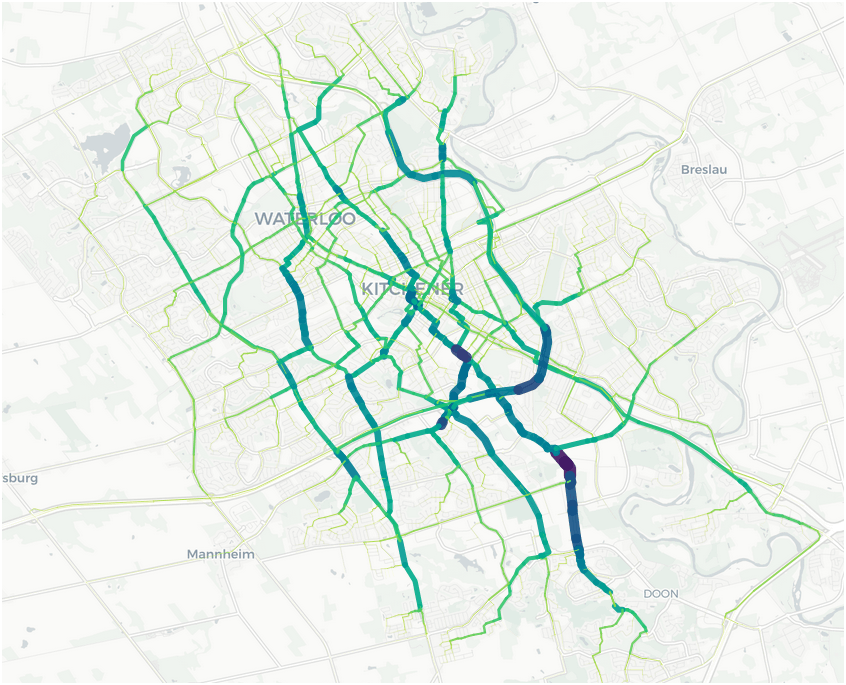We can see many differences from the previous map after considering speed reductions on major arterial roads. While the same changes in shorter road preferences are still present, there are also longer stretches of arterial roads that have become more or less preferred routes.
In the east, Weber Street and Margaret Street are highlighted in red, indicating that these roads will likely become less traveled. For example, Margaret Street has four schools along its length, which would slow down travel. It also seems that nearby residential streets would be more likely to become local “short-cuts” as these arterial roads become less effective for drivers.
On the opposite side of King Street, the betweenness of Westmount Road has decreased, presumably due to the schools on the road. It seems that traffic would increase parallel to that on Fischer-Hallman.
The reader should remember that these visualizations are meant to show how the network of optimal travel routes will likely change based on the betweenness network algorithm. Many of the most efficient routes through the city will remain unchanged even with the inclusion of school safety zones. It is also important to note that the visualization does not quantify the number of vehicles that may change routes. Instead, this exercise in data visualization is a crucial step to better understand some potential scenarios that could occur. One would hope that the Region has invested the time and effort to determine the likely systemic effects of major road changes.
My impression of the visualization is that the changes affecting speed limits around schools are likely to affect how people drive around their local neighborhoods. In some cases, these changes seem likely to encourage drivers onto arterial roads (i.e., probably a good thing). But in other cases, it seems to encourage through traffic into residential neighborhoods.
The changes become more confusing when we consider slowing down traffic for community safety zones along residential neighborhoods. Some streets, like Margaret Avenue, seem likely to be abandoned in favor of residential “short-cuts.” Other routes, like Westmount Road, also seem likely to encourage people to shift onto roadways even further out of the twin cities.
At a certain point, many small changes can have a large, unanticipated effect on the entire system. In this case, introducing many areas in the city road network where cars have to slow down, or drivers risk a steep fine is likely to inadvertently encourage drivers to find more optimal routes – even if those routes are actually along residential streets. The advent of Google Maps and similar mobile phone-based GPS systems means that all drivers could cut through residential neighborhoods to shorten their trip times. In fact, GPS systems guarantee that drivers are more likely to be systematically encouraged to drive on alternate routes away from planned arterial roads simply because these roadways are no longer efficient.
